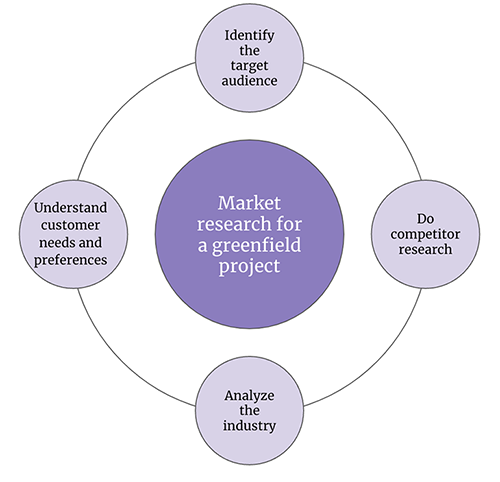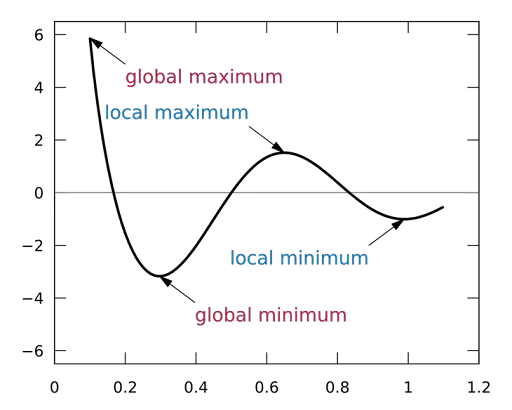It was the summer of 2016. I was working at India’s one of the biggest fashion ecommerce companies and had come back from a vacation after a big product launch. I knew I would be given a new responsibility — a new product.
“Aniket, I have sent a meeting invite for tomorrow about a new product that you can lead. Let’s have a chat.” My manager said to me on the first day of my return. I didn’t know what to expect. All of the current products had a product manager.
“So, we have a new greenfield product: brand stores. Would you like to work on it?” My manager and I discussed the product, the users, the problems, and more for that entire week. This was the very first greenfield product I worked on as a product manager. And it was surely one of the most exciting ones as well.
In this blog, we’ll learn all about greenfield projects and I’ll share the lessons I learned along the way.
Table of contents
So what exactly is a greenfield project?
In the software world, a greenfield project refers to a project that does not have any existing infrastructure or legacy systems. It’s essentially a project built from scratch.
The word “greenfield” is a reference to greenfield lands in real estate that are completely untouched by any previous construction. This kind of project gives a blank slate to creators. In the software world, these creators are engineers, product managers, designers, marketers, and sales personnel.
In the context of software companies, a greenfield project could be a new idea developed in an unexplored market. For example, Uber’s creation of an online taxi marketplace. Another example is a completely new offering of service or a product from the company, like Apple launching solar panels to help people save electricity.
Greenfield vs. brownfield projects
A greenfield project’s direct contrast is a brownfield project, which involves making improvements or modifications to the current project. An example could be the recent release of iOS 16.3.1. It has a long list of modifications to current features, as well as some new features that were added.
Benefits of greenfield projects
There are some very beneficial features of greenfield projects, including:
- Innovation: greenfield projects allow teams to start from scratch. This means there is a lot of room for innovation and new ideas
- Flexibility: since no system or infrastructure exists, there is no dependency on any previous system. The project is therefore lenient and one can create new solutions with a lot of flexibility
- Customization: a company or team can tailor solutions to users’ needs and requirements. This gives teams much more control over customization
Drawbacks of greenfield projects
As with any benefits, there are also disadvantages and drawbacks. For greenfield projects, the main ones are:
- Cost: because of the absence of the current system, it might be expensive to build a totally new project from scratch
- Risk: since the company and team are venturing into the unknown, there are risks of developing a wrong solution. There’s a chance that the project might not be the right fit for the company or users it’s aiming for
- Lack of initial feedback: since the project is completely new, it might be difficult to get initial feedback from users
5 stages of a greenfield project
A greenfield project has five stages:
- Defining the project scope/kick-off
- Conducting market research
- Building the product roadmap
- Implementing the project
- Launching the project
Let’s explain each stage in more detail below.
1. Defining the project scope/kick-off
The hardest part of leading a greenfield project as a product manager is the kick-off and defining the initial project scope. Unlike a brownfield project, there is no starting point or reference. Should we start with engineering or design? What should the MVP be? How do we bring all the stakeholders together?
Here’s what I did as a product manager back when I led a greenfield project:
- Identified all the potential stakeholders. This included an engineering manager, design lead, lead engineer, and operations lead.
- Scheduled a daily, 15-minute check-in with all the relevant stakeholders every day for one month
- Assigned tasks to the stakeholders. For example, a task could be the product manager coming up with all the possible use cases for engineering and design understanding the scope of the work
- Documented the progress of the tasks and made sure that they were worked on
At the end of the month, we were able to come up with a plan. This plan included:
- A clear project objective
- Success criteria
- Assessment of risks and challenges
- Timeline
- Resource utilization
2. Conducting market research
Market research is one of the most interesting phases of a greenfield project, primarily because there is no data readily available for the teams to work on. Unlike in a brownfield project, teams don’t have data to go off of and are starting from scratch.
This makes market research a bit more challenging. Here are a few ways to conduct market research and come up with insights that can help in the decision-making of a greenfield project:

- Identify the target audience: determine who the target or primary customers are, and what their needs and preferences are. This can be done through surveys, focus groups, and customer interviews. Creating user personas will help everyone understand the wide array of users that’ll use the systems and solutions later. These can be based on geography, gender, income, interests, values, etc.
- Do competitor research: studying how the users are using competitors’ products can provide a brief understanding of how other companies are solving problems for the users
- Analyze the industry: the first step to analyzing the industry of a greenfield project is to define it. Identify the size of the market, key players, and major trends. Another thing that I recommend is to read industry reports, publications, government data, and other relevant resources. Analyze the data from these resources to identify patterns and insights
- Understand customer needs and preferences: an effective tool to understand customer needs and preferences is by drawing the customer journey. This visual goes from the initial interaction of the potential product to the point of purchase (or beyond). It can give a good overview of a customer’s problems during the entire journey. Also, as pointed out earlier, creating user personas can help understand the needs and preferences of the user/customer
3. Building the product roadmap
A product roadmap helps teams get a clear understanding of what to deliver and when. In a greenfield project, this is an important tool to deliver solutions. Here are a few pointers that will help you, as a product manager, build an achievable product roadmap.
Understand the team’s expertise and defining roles
This is an extremely important part of the success of the product. There needs to be a balance of frontend engineers, backend engineers, and designers depending on the product. And understanding the team’s expertise, skills, and interests will help them have clarity of their responsibilities and foster strong communication and collaboration.
Define the project scope and timeline
This part of the roadmap is particularly challenging because there are multiple variables and uncertainties involved in a greenfield project. This is why it’s important to understand the scope of the project and key milestones, come up with a realistic estimation of the work, and continuously review and adjust the timeline. It’s important to be agile for a greenfield project.
Prioritize features and functionality
This is the backbone of the entire phase. Ideally, it should be connected with the bigger vision of the product and the problem it’s solving. There are multiple frameworks available to prioritize the features such as Kano, story mapping, the MoSCoW method, opportunity scoring, product tree, or cost of delay. There’s also the ability to come up with a new framework. The most important goal is to prioritize the features so the team can deliver the highest-value feature in the shortest available time.
Allocate resources and budget
The allocation of resources for a project requires having a strong understanding of the costs. And how do you estimate that? A few pointers to consider while estimating the cost of a resource are salaries, equipment costs, software licenses, training expenses, travel costs, and anything else that a team member would need to successfully participate. Use this information to create a realistic budget, include potential risks or uncertainties, and allow a buffer.
4. Implementing the project
The logical next step after the allocation of resources and determining the budget is the implementation phase. This is where all the teams come together and start working on the project. For this to happen, you need to develop a project plan, manage the deliverable, and monitor the progress.
Developing a project plan
A project plan includes a timeline of the respective deliverables and who’s working on them. There are multiple tools available in the market for building this plan, such as Jira, Monday.com, Trello, and Zoho to name a few. This plan also helps to understand any dependencies that the project might have and acts as a single source of truth for everyone.
Managing project deliverables and monitoring progress
This is the phase where the teams work together to implement the deliverables. The product manager needs to have an overview of the status of every deliverable. One of the effective ways to do this is to schedule a daily 15-minute standup with the team to share updates and more importantly any blockers they are facing.
In case of blockers, the product manager needs to act on them quickly so that no team members are blocked and the project functions smoothly per the initial project plan. In case the blocker is not solved for some reason, the project plan should be updated and the details should be communicated to all the relevant stakeholders.
5. Launching and scaling the product
This is ideally the last part of a greenfield project, where the product is launched to customers. But only launching a product won’t help, there needs to be marketing of the product for the customers to get to know about it. There are multiple avenues for marketing, including word of mouth, paid advertising, and content marketing. It highly depends on what the product is.
Once the product is on the market, you will receive feedback. And it is important to understand the feedback to come up with improvements and modifications. This may involve making changes to the design, features, or marketing strategy.
Last but not least, as a product manager, it’s important to understand the scaling aspect of the product to meet market demand. Considering that there is positive feedback from the customers and they are willing to pay for the service, there should be a plan in place to scale the product to other customers. This will require continuous monitoring of the KPIs and insights from the data.
Conclusion
Overall, a greenfield project is a daunting task. The beauty of it is that it provides an exciting opportunity for a product manager and the entire team to create something from scratch. It’s a blank canvas that can be converted into a beautiful painting with carefully selected colors.
Subscribe to our product management newsletter
Get articles like this to your inbox
Having a strong project management process in place, along with a skilled team and effective communication with stakeholders, can help ensure success.
Featured image source: IconScout
Source link







Leave a Reply